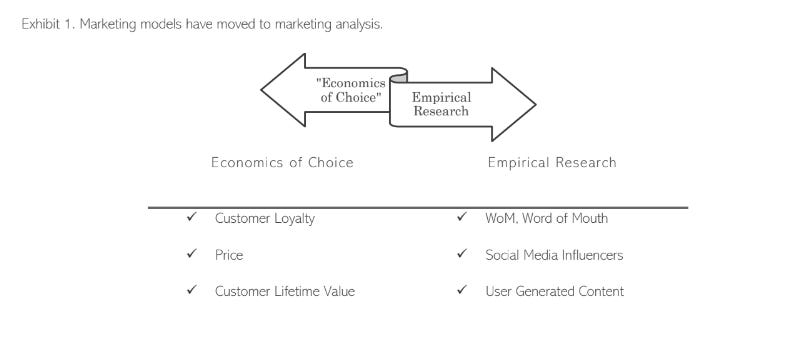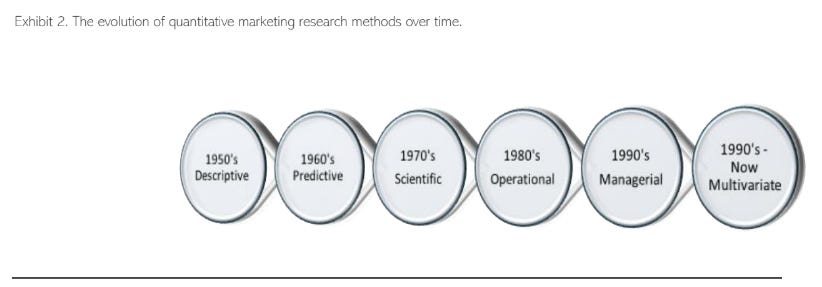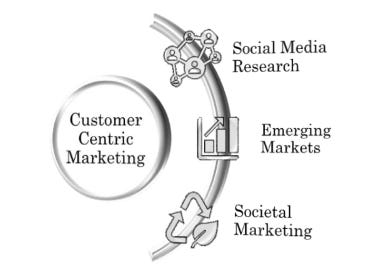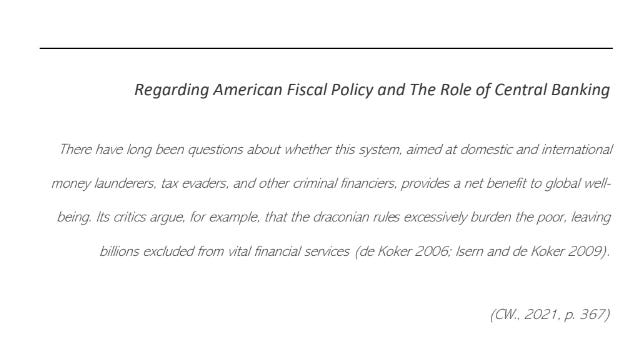An Article Critique of Journal of Marketing Theory and Practice, 2021, VOL 29, No. 1,3-12, Jagdish.Sheth.
Original: August 7, 2021 by Hilary J Schmitt, SCMP. Article Critique of “New areas of research in marketing strategy, consumer behaviour, and marketing analytics: the future is bright.” J. Sheth 2021
 AN ARTICLE CRITIQUE:
AN ARTICLE CRITIQUE:
Critique of Journal of Marketing Theory and Practice, 2021, VOL. 29,
NO. 1, 3-12, by Jagdish Sheth ©2021
“New areas of research in marketing strategy, consumer behavior, and marketing analytics: the future is bright”
Table of Contents
- Introduction
- Background Information
- Assumptions
- Unbiased Interpretation of Analysis
- Thesis Rationale
- Conclusion
- References

Introduction:
The focus of this case critique of Journal of Marketing Theory and Practice, 2021, VOL. 29, NO. 1, 3-12, by Jagdish Sheth ©2021,
“New areas of research in marketing strategy, consumer behavior, and marketing analytics: the future is bright” (Sheth, 2021).
The area of focus for this journal article is marketing research and the evolution of marketing over time.
Background Information:
As written, Sheth presents his thesis as being that; marketing has become a science and the future of marketers is in the search for practical research techniques.
The author qualitatively supports his position that multiple forms of new analytical inputs are only beginning to reveal practical use in contributing to accurate predictive models, causation, consumer behaviour and it is largely unknown how to conduct and interpret these new forms.
Sheth further explains how he arrived at his conclusion by performing a review of the evolution of marketing and provides readers
with a rich timeline of variables and practical deviations within the discipline and catalogues the research processes applied through history.
Exhibit 1. Marketing models have moved to marketing analysis.

Economics of Choice vs. Empirical Research
✓ Customer Loyalty
✓ WoM, Word of Mouth
✓ Price
✓ Social Media Influencers
✓ Customer Lifetime Value
✓ User Generated Content
The author concludes by saying there is a shift to empirical research around physiological analytics as opposed to the biometric focus of the past and that processing big data has replaced linear programming models for market researchers.
Assumptions:
The assumptions that must be understood before taking a position on the Article is that our knowledge of the current trends in buying behaviours is largely coloured by North American lifestyle and perspective. Any position we assume will lack first-hand understanding which only experience within certain markets would provide to us.
Our knowledge is mostly from informal reviews of unstructured quantitative reporting and qualitative research and with that, my perspective carries with it a risk of severely misjudging challenges which will be present in the digitization of the entire world and the speed at which this could happen.
Additionally, the certain political factors will carry significant weight within our assumption, and they are that research and access to information is most often approached diplomatically and under generally democratic political systems. This of course, is not reality and would require more study to adopt an entirely accurate perspective to properly defend the position of my critique.
Unbiased Interpretation of Analysis:
This analysis finds that the author has made four clear statements supporting his original position.
Statement 1: There is no practical model for selling in the modern-day marketplace which can be practically applied. The author believes a definitive selling process is what we need to avoid stagnation as companies move away from the competitive and strategic approach of recent times.
Statement 2: We are heralding in a new era of marketing which will be defined by the users experiences. The author believes consumer centric marketing will continue in greater force and predicts a return movement back towards managerial marketing techniques. This is driven by the increased analytical focus in marketing research and due to availability of consumer behavioural data gathered in e-commerce and rising reliance on digital engagement across all market channels.
Statement 3: The future of marketing is overwhelmingly digital first and this will apply to everything. There will be no interaction within brick-and-mortar stores, shopping malls or physical locations and that marketing will largely become fully digitalized in all of its forms, including consumption, sales operations, consumer experience and branding.
Statement 4: Forensic analysis is missing form marketing analytics in the modern-day practice of marketing and market analytics. In essence, that in the past techniques for marketing research lacked sufficient sources of relevant data. Now the problem has switched and the plenitude of data available to researchers requires effective techniques for its practical analysis and to draw relevant conclusions.
Exhibit 2. The evolution of quantitative marketing research methods over time.

Thesis Rationale:
We will address the questions as presented by the author in our statement by clarifying our position, which is that the thesis
presented is largely aligned with our own understanding and beliefs about the future of marketing. Within his exploration of the issues for marketing Sheth asks many questions about the future role of supply chain in marketing, defined here as reverse marketing.
As a reader, we agree strongly that marketing in practice today is quickly blending into an operational process and is becoming in some instances so closely tied to the supply and production of the goods and services that it increases fluidity and adaptation.
Marketing is served when waste is eliminated from information systems and functionally reacts to economic forces and consumer demand or can proactively plan with greater effect.
Without hesitation we, the reader can support the authors stance that market functions such as dynamic pricing will amplify the efficient use of scarce supply and maximize the use of available resources. In addition, the observation that marketer’s role in society is increasingly tied to corporate responsibility and compliance measures will become less of a mandated requirement and more commonplace because of the widespread adoption of ethical standards by buyers and consumers.
This brings us to the next point, where we must highlight the authors summation, that the greatest number of people live with the least amount of wealth and are part of a massive low-income consumer base desperately seeking solutions to the same problem. A problem which if solved by marketers, would prove lucrative indeed.
For this we can examine the very same statement, because contained within that sentence is both the problem and its possible elimination. The systems of wealth and finance themselves which are the valuation currently placed on life and individualistic importance within a capitalist world. If the market research proves the need, then basic theoretical economics states there will be supply. The rise of token currencies is evidence of a digital disruption and its first real brush with financial systems.
Exhibit 3. The author believes that marketing will shift to being completely customer focused.

Conclusion:
We are unsurprised to see many converging issues pushing at the cracks in our political and economic systems and believe marketing, being defined as “an exchange”, will probably not resemble anything in history so far. With current global pressures being what they are, and the balance of power being held more firmly by intangible asset producers and their users, namely within the realm of information management and the residual influential power held in our communications systems rather than by the nation state, this shift away from the established contributors to profitability could happen sooner than we realize.
Societal pressure to preserve the environment and maintain habitable conditions for everyone is shifting consumption. Companies which fail to link their sales strategy to supply chain will be punished for negatively impacting the consumer base, such as encouraging overconsumption or applying detrimental anticompetitive practices. Such behaviour extinguishes innovation and can stagnate domestic growth when acting to suppress technological discovery. Balanced drivers are seen in the rise of ESGs and an emphasis for corporate social responsibility in global corporate leadership and success.
In contrast to the authors stance that sharing economies are the preferred method of acquiring necessary services or goods, we believe that Ownership itself is not dissolving, and this perspective cannot be relied upon as an accurate prediction for the future.
First some seismic shift in political systems and established methods of exchange would need to emerge. Traditional fiat systems are perhaps due for an overhaul and a disruption might be expedited if digitization becomes accessible to all.

Regarding American Fiscal Policy and The Role of Central Banking
There have long been questions about whether this system, aimed at domestic and international money launderers, tax evaders, and other criminal financiers, provides a net benefit to global well-being. Its critics argue, for example, that the draconian rule s excessively burden the poor, leaving billions excluded from vital financial services (de Koker 2006; Isern and de Koker 2009).
(CW., 2021, p. 367)
There are too many factors for this brief critique to properly explore the likelihood of many future scenarios, least of all when each might come to pass. One thing is certain, that to see the world from a marketer’s perspective is to understand the world is quickly going ‘all-digital’, if it hasn’t already.
References
CW., C. (2021). Chartering the Fintech Future. CATO Journal, Spring/Summer2021, Vol. 41 Issue 2, p383-412. 30p.Lacobucci. (2014). MM4, 4th Edition. Cengage Learning.Sheth, J. (2021). New areas of research in marketing strategy, consumer behavior, and marketing analytics: the future is bright. 2021, VOL 29, No. 1,3-12, J.S. (https://www.jagsheth.com/jag-sheth.pdf)(G. B. Charles H. Kellstadt Professor of Marketing, Ed.) Journal of Marketing Theory and Practice, VOL. 29(NO. 1), 3-12.doi:https://doi.org/10.1080/10696679.2020.1860679Bartsch, C. (2020, November 29). How to Write a Critique for a Case Analysis. Retrieved from penandthepad.com:https://penandthepad.com/write-critique-case-analysis- 8415161.html
Link to the critique;
- https://www.editions.sclci.net/p/an-article-critique-of-journal-of?r=2cavpc&utm_campaign=post&utm_medium=web
Link to the original journal review;
- https://www.tandfonline.com/doi/abs/10.1080/10696679.2020.1860679
Link to the original author;
- https://www.jagsheth.com/jag-sheth.pdf
Suggested;
- journal bites 🍪 Transforming to a Circular Supply Chain
- “Sustainable Procurement.” – Supply Chain Logistics Consulting
To learn more and to receive all the benefits of a subscription follow our content on all channels.
If you are interested in hiring a management consultant for your business or project and want to learn more about our management consulting services, please contact us today. We are a professional management consulting firm with years of experience in helping people at businesses like yours to achieve results.
S&Co., Supply Chain Logistics Consulting Inc.
Visit and Subscribe on all our Channels.
- 🌐 www.supplychainlogistics.net
- 📩Company Newsletter
- 🔗 SCLCI’s Link-in-Bio
- 𝕏 Connect
- 🔖 Join LinkedIn
- ✅ WhatsApp ☎
👉 And don’t forget to share this Special Edition.





